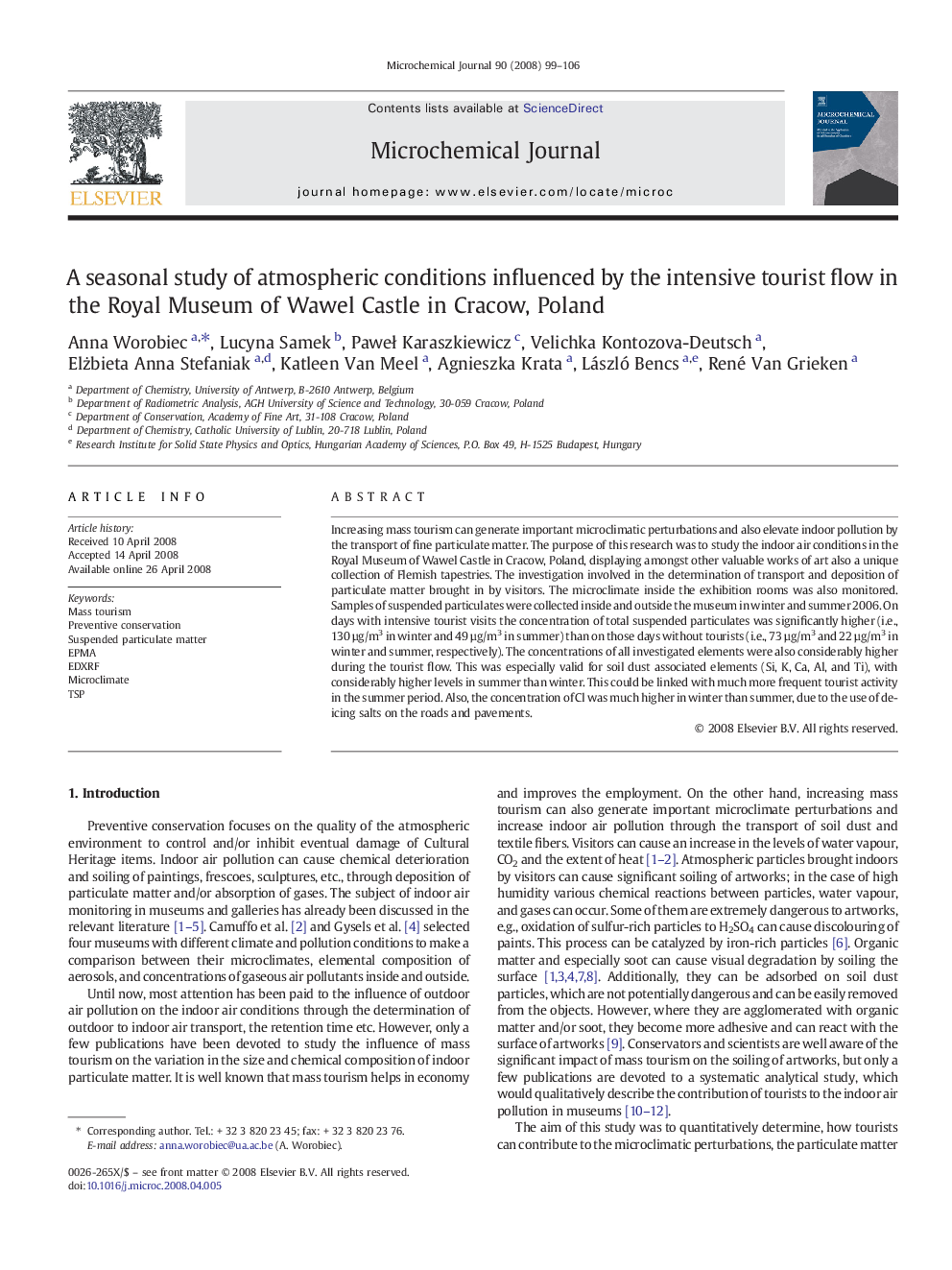| Article ID | Journal | Published Year | Pages | File Type |
|---|---|---|---|---|
| 1228078 | Microchemical Journal | 2008 | 8 Pages |
Increasing mass tourism can generate important microclimatic perturbations and also elevate indoor pollution by the transport of fine particulate matter. The purpose of this research was to study the indoor air conditions in the Royal Museum of Wawel Castle in Cracow, Poland, displaying amongst other valuable works of art also a unique collection of Flemish tapestries. The investigation involved in the determination of transport and deposition of particulate matter brought in by visitors. The microclimate inside the exhibition rooms was also monitored. Samples of suspended particulates were collected inside and outside the museum in winter and summer 2006. On days with intensive tourist visits the concentration of total suspended particulates was significantly higher (i.e., 130 µg/m3 in winter and 49 µg/m3 in summer) than on those days without tourists (i.e., 73 µg/m3 and 22 µg/m3 in winter and summer, respectively). The concentrations of all investigated elements were also considerably higher during the tourist flow. This was especially valid for soil dust associated elements (Si, K, Ca, Al, and Ti), with considerably higher levels in summer than winter. This could be linked with much more frequent tourist activity in the summer period. Also, the concentration of Cl was much higher in winter than summer, due to the use of de-icing salts on the roads and pavements.
